Many eCommerce business owners are switching their business platforms to SaaS (Software-as-a-Service). They’ve noticed a significant hike in growth after choosing a SaaS platform to run their online businesses.
According to a recent McKinsey & Company report,
Technology industry analysts predict further growth in the SaaS market and expect to see the market for SaaS products near $200 billion by 2024.
Choosing SaaS could be a smart move for your business in terms of flexibility, scalability, and operational efficiency.
However, if you are an online business owner and don’t know much about the SaaS platform, this blog post is for you.
In this blog, we will mainly focus on,
- When should you go for the SaaS eCommerce platform?
- Is a SaaS platform a better fit for your business compared to an open-source or self-hosted application?
- And much more.
So, keep reading!
What is a SaaS eCommerce Platform?

A SaaS eCommerce Platform is a cloud-based solution that provides businesses with the tools and infrastructure to build, operate, and scale online stores and sell products or services over the Internet.
It helps to strengthen company performance and growth. As it’s a cloud model, the software is stored on an external server rather than an in-house server.
Usually, users enter a Software-as-a-Service system through a web browser using a username and password. It minimizes the hassle of installing the software on each user’s computer.
It’s like running an online store without needing to download, install, or maintain complex software. That’s the magic of a SaaS eCommerce Platform: an all-in-one solution for building and managing your online store, delivered entirely through the cloud.
Key Components of a SaaS eCommerce Platform:
A SaaS eCommerce serves as the backbone of an eCommerce business. This platform offers a wide range of features and functionalities to streamline various activities of your online store.
Below are the significant features of a SaaS eCommerce platform-
- Website Builder: Most SaaS eCommerce platforms offer intuitive website builders with customizable templates. Users can design and customize the look and layout of their online store without having any coding knowledge.
- Product Management: These platforms allow businesses to easily upload, organize, and manage their products or services. You can add product descriptions, images, pricing, and inventory information.
- Payment Processing: SaaS eCommerce platforms often support multiple payment gateways. Common payment options include credit/debit cards, PayPal, and other online payment methods.
- Inventory Management: Efficient inventory management tools help businesses keep track of stock levels, restock products when necessary, and prevent overselling.
- Order Processing: These platforms facilitate the order fulfillment process. It may include order confirmation emails, shipment tracking, and generating invoices.
- Security: Security is paramount in eCommerce. SaaS eCommerce platforms typically come with built-in security features like SSL certificates, data encryption, and compliance with industry standards like PCI DSS.
- Scalability: SaaS eCommerce platforms are designed to handle increased traffic and product listings without major infrastructure changes.
- Analytics and Reporting: They provide valuable insights into sales performance, customer behavior, and other key metrics. This data helps businesses make informed decisions and optimize their strategies.
- SEO and Marketing Tools: Many SaaS eCommerce platforms offer SEO-friendly features and marketing tools to help businesses drive traffic to their websites and improve search engine rankings.
- Mobile-Friendly: With the increasing use of mobile devices, these platforms ensure that online stores are responsive and accessible on smartphones and tablets.
Apart from these core functionalities, reputed companies always keep their options open to customize the system according to your unique requirements.
Here is the summary of the SaaS eCommerce platform:
- Allows access to software on a subscription basis using external servers.
- Enables each user to access programs via the Internet. There is no need to install the software on the user’s computer.
- Supports many applications such as inventory management, order processing, customer retention management, and human resources.
Top Benefits of SaaS eCommerce Platform
There are several significant reasons why a large number of merchants are turning to SaaS eCommerce to run their online stores.
Here are five of the top advantages of using a SaaS eCommerce platform:
I) Easy Management

SaaS eCommerce platforms provide hosts and manage the software. You don’t need any external hosting provider or IT team for technical infrastructure. It’ll minimize your hassle of software maintenance, hosting, uptime, speed optimization, bug fixing, software updates, and others.
Your SaaS provider will always keep an eye on your store so you can get maximum output from it. Another important fact is that all SaaS upgrades and updates are done automatically. So, retailers get a chance to save time and money for further assessment. SaaS providers typically are well known for their helpful customer support team.
II) Readymade Products to Use
You’ll get a wide range of essential products already developed and convenient to use. Most of these products are highly customizable so that you can easily modify them as per your requirements. Thereby, it reduces both your deployment cost & time and speeds up your process.
As we assume, developing an eCommerce site could take months but ready platforms have changed this concept. SaaS eCommerce platforms accelerate your developing time. Moreover, easy integration with other useful tools makes it more versatile and powerful.
III) Scalability
SaaS eCommerce platforms are comparatively more robust and flexible. With your growing business, it also extends facilities to meet all the demands. These platforms enable you to expand your customer base, process more orders, and introduce more advanced features to your store.
As your store grows, you may want to integrate new sales channels and increase server bandwidth to manage extended site traffic and process more sales. Your SaaS provider will take care of your all development needs so you can earn a good profit.
IV) Security and PCI Compliance
As an online seller, it’s essential to ensure the maximum security of your customer data. The SaaS eCommerce platform makes your online store PCI-compliant. They take on the responsibility of keeping your store updated with any patches or bug fixes that affect your security. This means your store will always be compatible with the latest software versions and web browsers.
Besides, SaaS data centers ensure regular backups to keep your information safe. It protects your site against vulnerabilities like downtime, data loss, and hacks. Customers get more confidence to share their payment information while purchasing on your site.
V) Cost Effectiveness
As we’ve mentioned above, SaaS providers are responsible for the store management process. It reduces your expenses on software development and maintenance. You can also cut down on the additional cost of maintaining an IT team.
This third-party provider ensures all the facilities to ensure higher store performance. However, apart from the software maintenance cost, it limits the hardware requirements as well. There is almost zero installation cost and a minimal maintenance fee.
Besides, you’ll get great advantages in time management. Such as auto-updates, quick deployment, and maintenance, compatible with multiple devices.
Disadvantages of SaaS eCommerce Platforms
Instead of having so many advantages for modern merchants, this may not be the right choice for some businesses.
Here are some pitfalls you should consider before going with SaaS eCommerce platforms-
I) Limited Control
As you know, SaaS offers many prebuilt templates and ready-to-use apps that include a lot of built-in functionality. While these highly customizable apps make your web development process simpler, they’ll also sometimes limit your online selling capabilities.
However, you have the option to extend core functionalities of SaaS, but there are some restrictions as well for extreme customization. Unlike software apps that are built in-house, SaaS eCommerce provides limited control. So, if you don’t feel comfortable leaving necessary control to third-party providers, it may not be the right choice for you.
II) Little Room for Migration
Once you’ve started working with SaaS eCommerce, you’ll be kind of locked into this system. SaaS users often struggle to migrate or recover digital assets after the partnership is terminated. You’ll lose your online store if you switch to the SaaS platform. Typically, there is no option to export your entire SaaS store to a new platform or host.
III) Growing Costs with Time
Small businesses typically use SaaS eCommerce to keep development costs lower. But it may not be a great deal over time. Based on annual turnover, SaaS eCommerce providers charge a high monthly subscription fee.
It’s better to estimate the cost for at least the next few years before choosing the platform. And if the cost outperforms your budget, then go for other self-hosted alternatives.
Confused about whether a SaaS eCommerce platform is perfect for you or not?
Actually, there is no straight answer. You have to understand your business needs and evaluate them against the overall pros & cons of available solutions.
What to Consider Before Choosing a SaaS eCommerce Platform for You
Nowadays, enterprises are more likely to integrate SaaS into their businesses. In the past 5 years, spending on SaaS subscriptions has increased by nearly 20 times.
However, businesses should consider all the details and subsequent business implications before buying SaaS products.
Below are the five key points you must go through when making a final decision:
a) Know Your Business Requirements
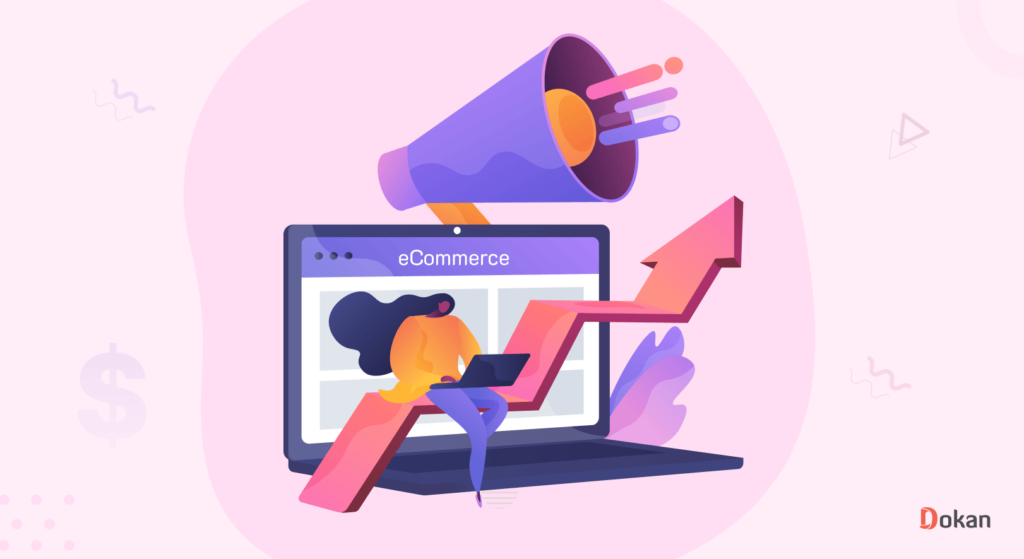
Before any technology integration or product changeover in your business, you must do deep research. Identify the specific requirements you need to accomplish the company goal and then watch whether the new system is capable of aligning with the business goal.
If you are in a dilemma about whether to pick SaaS or not, ask yourself these questions:
- What problems does a SaaS solution solve?
- Do you have those problems in your business?
- Is your present solution capable of solving those problems?
Once your problems and requirements are well defined, it will be easier to find the best solution for you in terms of smooth performance, security, cost, and others.
b) Gather Real Users’ Feedback
Although it seems everything is perfect on paper, there may be some challenges during system deployment. A wise decision is to ask for the list of existing clients who are already using the same system. Such as-
- Vendor’s customer service operation
- Level of vendor’s technology expertise
- Ease of communicating with the vendor
- Special event handling capability and backup plans
In this way, you can uncover the real scenario of running your business on that system.
c) Try the Demo First
Before investing money in a full-fledged solution, it’s better to first test the solution and then decide on making a complete purchase. However, you can pay a minimal fee for primary implementation.
d) Sign A Service Level Agreement
Having a service-level agreement (SLA) helps you build a transparent relationship with your vendor. This will define the level of service you should expect from a vendor. Moreover, it makes your vendors more responsible for ensuring the best service within their capacity to meet performance levels.
e) Flexibility Level and Exit Strategy
One of the main benefits of using SaaS is its scalability. SaaS provides individual facilities for each service inside your business. So, when required, it could extend the capability to accommodate new requirements.
Plus, it’s equally important to review the exit and migration strategies. If the relationship doesn’t work out as planned, you should have a simple way to change your strategy.
Top 5 SaaS eCommerce Platforms for You in 2024
Here is the list of the most popular SaaS eCommerce platforms for your business:
1. Adobe Commerce

Adobe Commerce can reshape the user experience to the desired level. They come out with several packages to accommodate any size of business.
It has a proven track record of giving amazing outcomes. Adobe Commerce shows efficacy by increasing up to +8% order value for small to medium businesses (leather retailers) and +15% revenue growth for medium to large businesses (multinational retail).
Adobe Commerce comes with various prominent features-
- Website management with secure payment gateway integration.
- Content and marketing campaign management
- Secure 3rd party app Integration, analytics, and presentable report
- Multiple store steps with multiple languages
- Product catalog, order, and shipping management
2. Dynamics 365 Commerce

Dynamic 365 brings a top-notch personalized user experience. This omnichannel retail platform supports 10+ apps for back-store management with the eCommerce platform. After launching in 2020, it created a tremendous change in the omnichannel retail industry by providing a seamless buying experience to customers.
According to Insider Intelligence, there is a higher possibility of growth in the eCommerce market by about 16.1% in the USA. The value will be equivalent to $1.06 trillion. Dynamic 365 Commerce can be a suitable platform to cut a great deal of business with various efficient features-
- Observe inclusive customer views and help build a loyal customer base.
- Infuse AI that understands both your and your customer’s needs and improves the ROI.
- Ensure flawless personalized buying experience through user-friendly applications.
- Real-time sales data dashboard for quick response.
3. Salesforce Commerce Cloud
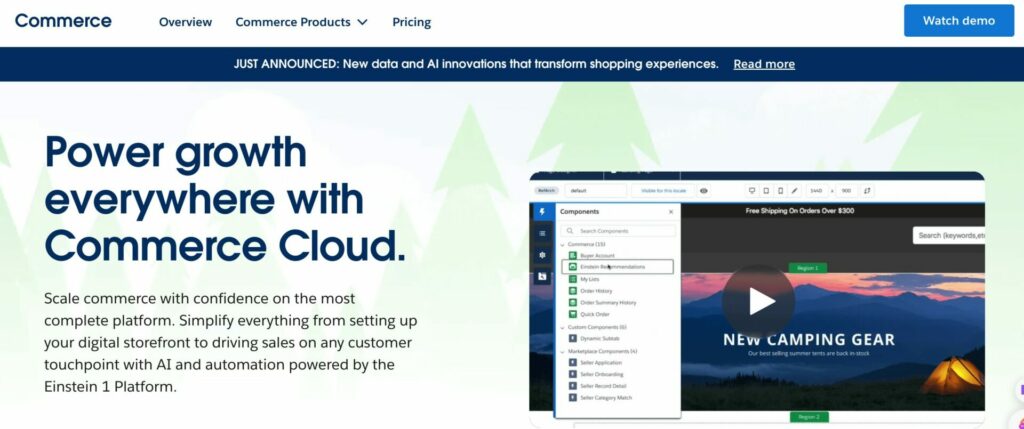
Salesforce Commerce is an award-winning cloud-based eCommerce solution.
Research reveals that 40% of buyers now do online shopping after good research. Salesforce builds confidence among buyers through its simple user interphase, which helps to gain more business. Mostly, it helps to hold customers. As per experts, 80% of future revenue comes from 20% of existing customers.
It comes with a good number of prominent features:
- Customer tracking and AI-driven setup of marketing strategies
- Data-driven optimization of a website
- Opportunity for direct engagement with the customer
- Optimization for cellular device
4. Shopify Plus
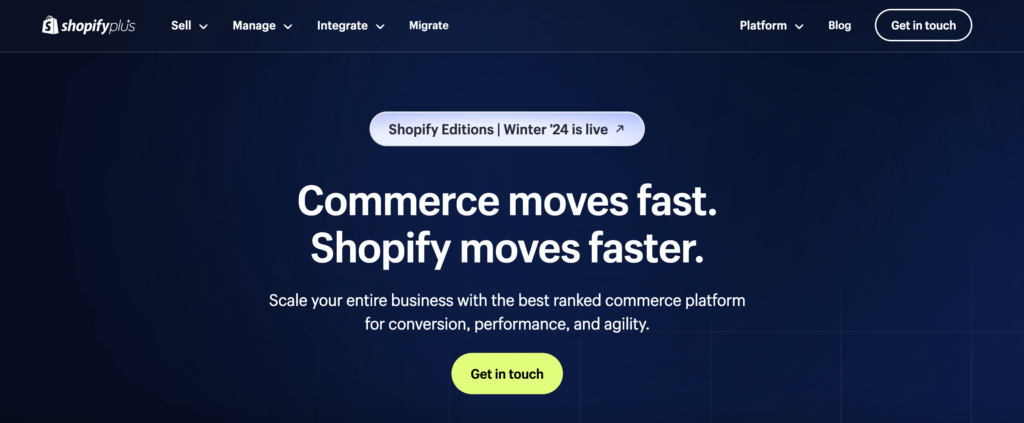
Shopify Plus is a rule-breaker for traditional eCommerce platforms that enables selling on and offline through diverse spaces like social media and the marketplace. Most vendors prefer this platform for their enterprise for its reliability, manageability, and expandability.
As per Builtwith, 3% of the top one million websites use Shopify Plus. The platform contains a large number of features to make it popular such as:
- Simple product management, cataloging, and listing
- Bulk product listing with search filter
- Web integration and visual customization
- Charge calculation, abandoned cart recovery, and quickest checkout
- Secure payment system integration
- Product review and search engine optimization
- Wholesaling store building
5. Commercetools
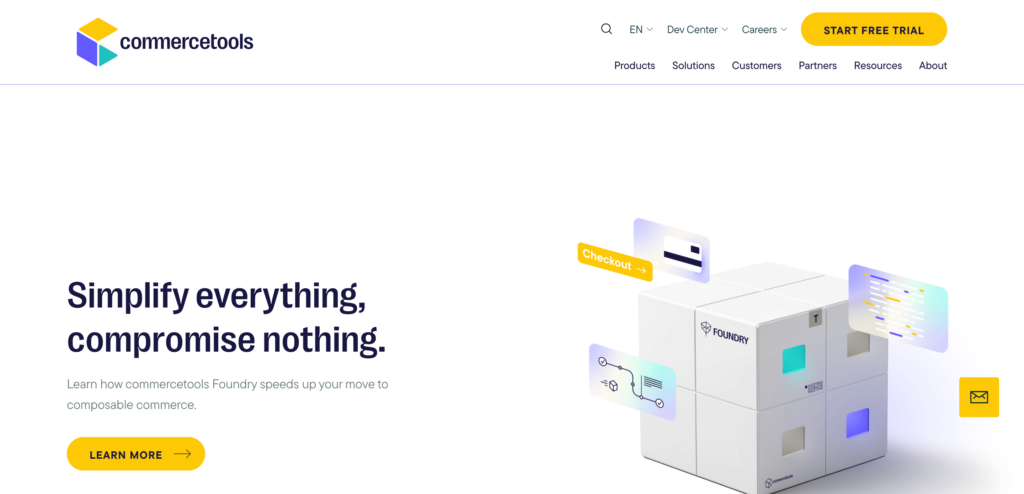
Commercetools is the most updated SaaS technology for B2B, B2C, and D2C businesses. This visionary eCommerce software architecture helps companies to innovate and iterate their offline business merge with online channels and boost their future business. The headless architecture helps companies to overwhelm old-style trade blocks and secure the future.
According to statistics, it can increase up to 20% of conversion rate and around 40% increased order value. A wide number of features helps to make it impossible to possible like-
- Connecting frontend with backend seamlessly through API
- Simple integration with preferred third-party application
- Ready to use block with customization and scalability
- Simple migration from any existing platform to the desired look.
Apart from these solutions, there are hundreds of other options as well. Do research thoroughly before integrating any new technology into your business.
SaaS eCommerce vs Open Source Platforms
Online sellers often get confused when choosing between SaaS vs open source. Each platform has unique benefits to pick over others. Before choosing, you should consider your needs and understand the differences between these platforms.
Below is a quick comparison of these platforms to help you out:
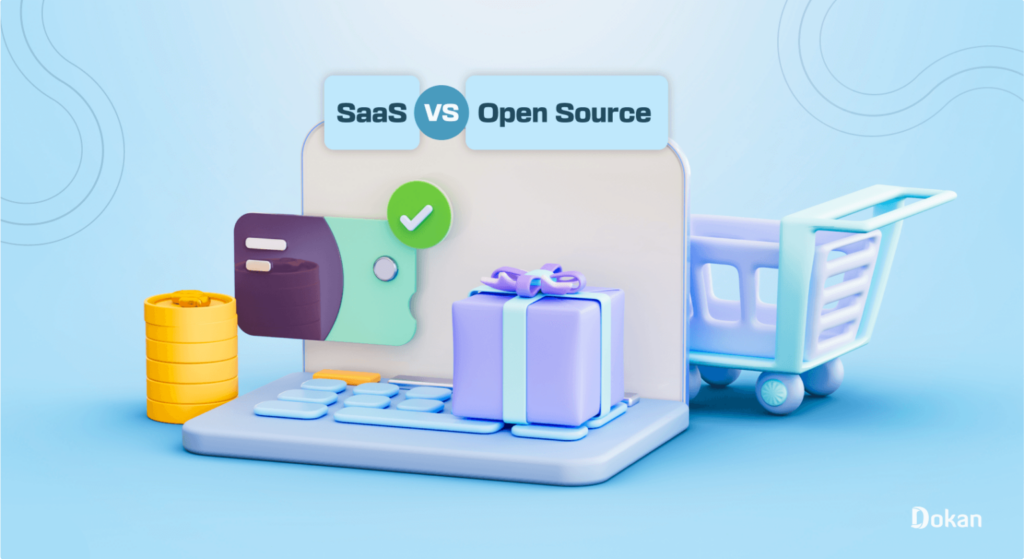
SaaS eCommerce platforms are licensed to users. Third-party vendors host and maintain all the systems on their cloud servers. They allow business owners to access the software through an internet browser. In turn, merchants must pay a monthly subscription fee based on usage.
SaaS service providers take on the responsibility of ensuring top-notch performance for their users. Along with hosting your online store, the vendor will take care of performance, PCI compliance, and installing firewalls. So, it requires predictably lower maintenance costs to run a business on SaaS.
But if you use on-premise or open-source eCommerce platforms, then you have to handle all aspects of your software. Such as security patches, software updates, and hosting services. For most enterprises, especially startups, it can be expensive.
Moreover, you may need to hire different professionals to design your storefront, maintain security, and handle software updates. It can be overwhelming to deal with multiple systems and align all the resources on time.
SaaS mitigates all these hassles and allows you to focus on your business growth.
However, many online retailers prefer open-source platforms as they offer a wide range of flexibility for customizations. In a sense, it could be a great benefit for new entrepreneurs, but as your business grows, you start facing difficulties. And require an in-house IT team to use the platform effectively.
Here’s a comparison table outlining the differences between SaaS and Open Source eCommerce platforms:
| SaaS eCommerce Platform | Open Source eCommerce Platform | |
|---|---|---|
| Hosting | Hosted on the cloud by the platform provider | Requires self-hosting on a server |
| Initial Setup | Quick and easy setup process, typically with guided wizards | Requires manual installation and configuration |
| Customization | Limited customization options, often based on pre-built templates and themes | Highly customizable, allowing full control over code and design |
| Cost Structure | Subscription-based pricing with monthly or annual fees | Free to download and use, but may incur hosting and development costs |
| Maintenance and Updates | Platform provider handles maintenance and updates | Responsibility for maintenance and updates lies with the user |
| Scalability | Easily scalable to accommodate business growth | Scalability depends on server capacity and technical expertise |
| Security | Platform provider manages security and compliance | Security measures are the responsibility of the user |
| Integration Capabilities | Often comes with built-in integrations for popular third-party tools and services | Requires manual integration with third-party tools and services |
| Examples | Shopify, BigCommerce, Squarespace Commerce | WooCommerce, Magento, OpenCart |
If you aren’t sure yet which platform you should choose, you can check our detailed comparisons between SaaS vs Open Source eCommerce and decide which platform you should use to build your online store.
Bonus: A Successful Case Study of Using a SaaS eCommerce Platform
Warby Parker is a well-known American online retailer of prescription glasses and sunglasses. Founded in 2010, the company disrupted the traditional eyewear industry by offering high-quality, stylish eyewear at affordable prices through an innovative direct-to-consumer model.

Warby Parker leveraged a SaaS eCommerce platform to power its online store and manage its entire eCommerce operations. By choosing a SaaS solution, Warby Parker was able to focus on its core business of designing and selling eyewear while relying on the platform provider for technical infrastructure, updates, and support.
Warby Parker’s success story illustrates how a SaaS eCommerce platform can empower businesses to disrupt traditional industries, scale rapidly, and deliver exceptional customer experiences.
By choosing the right SaaS solution and leveraging its capabilities effectively, businesses can achieve significant growth and establish themselves as industry leaders in the digital era.

Closing Notes on the SaaS eCommerce Platform
SaaS eCommerce solutions have become increasingly popular among businesses and owners in recent times. About almost 40% of all online stores use SaaS-based eCommerce platforms and about 90% of the stores use some form of eCommerce software as a service.
This may be for multiple reasons, such as:
- There is no need to buy any kind of expensive software.
- Coding knowledge and prior experience is not a requirement.
- Almost the whole website work can be done through the drag-and-drop operation.
- Multiple functionalities, features, and tools are present to suit your business needs.
- Extensions and plugins are available to enhance your website and store.
- Cloud storage is available to facilitate access from anywhere.
- You can run your website from any place with any device you have.
If you’re planning to build a new eCommerce store or extend your store’s functionalities, take your online business to the next level with a SaaS eCommerce platform.
Do you have any further questions on the SaaS eCommerce platform? We’re open to any constructive discussion in the comment section below.
Subscribe to
Dokan blog
We send weekly newsletters, no spam for sure!

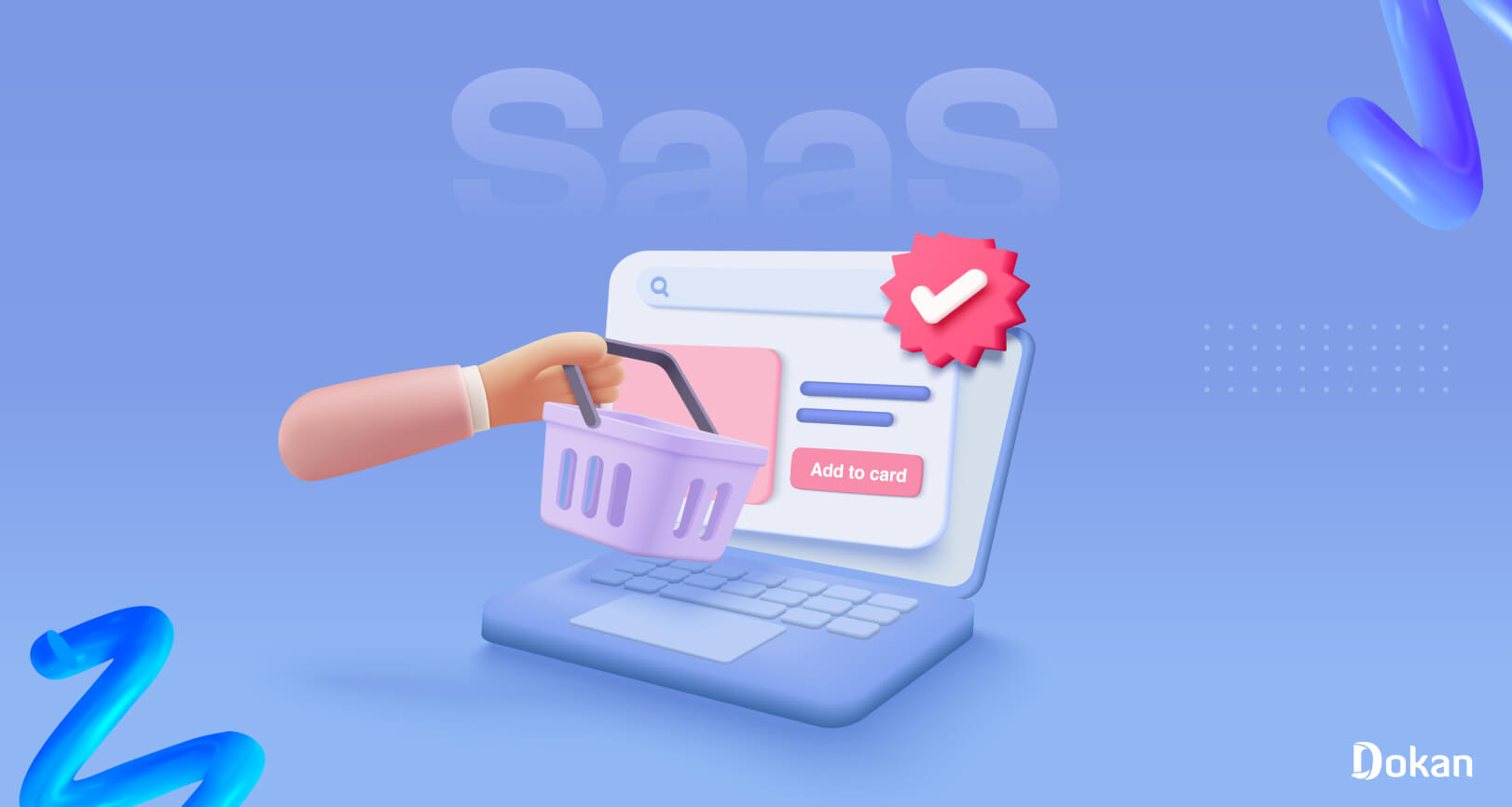

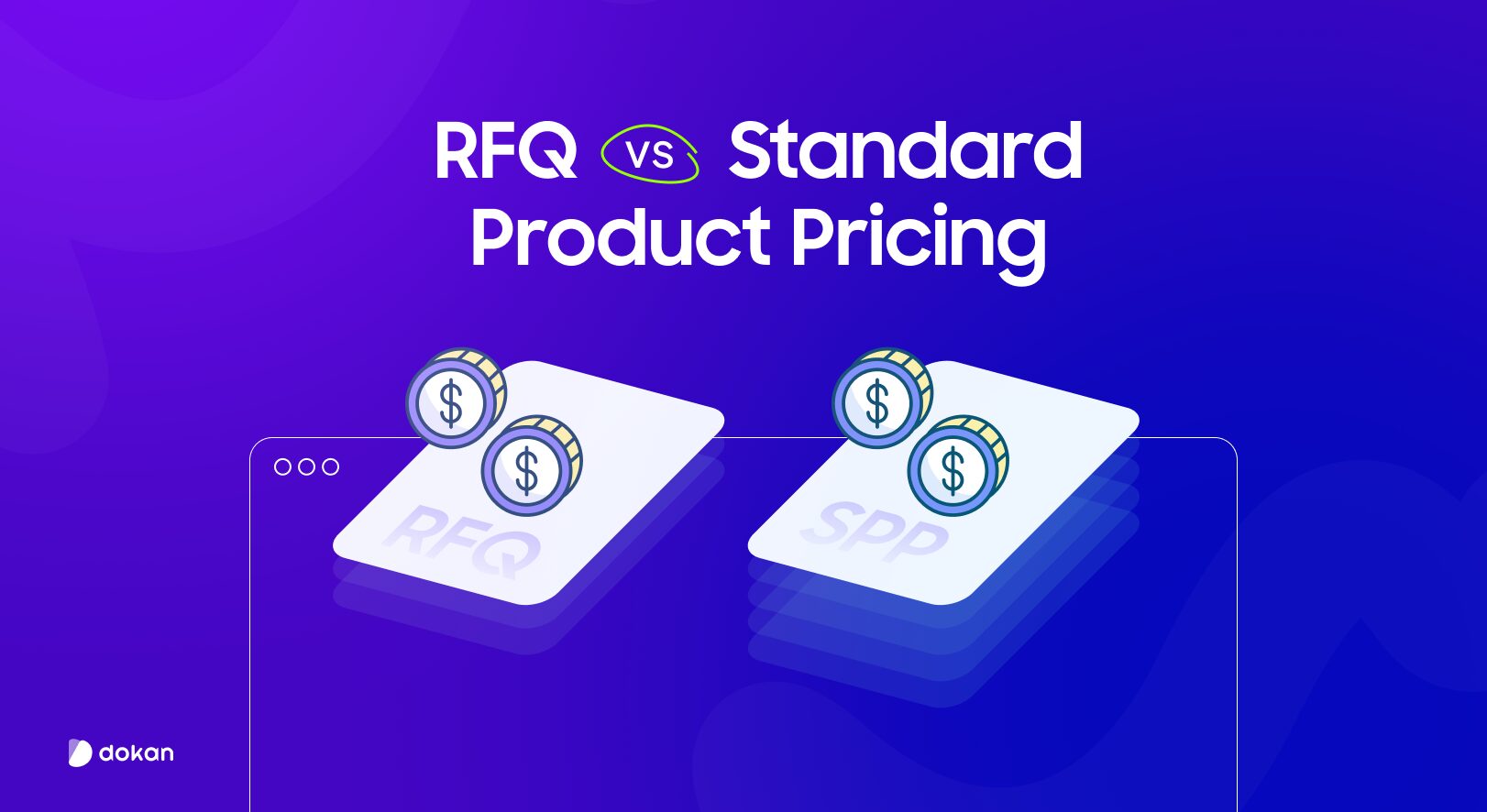
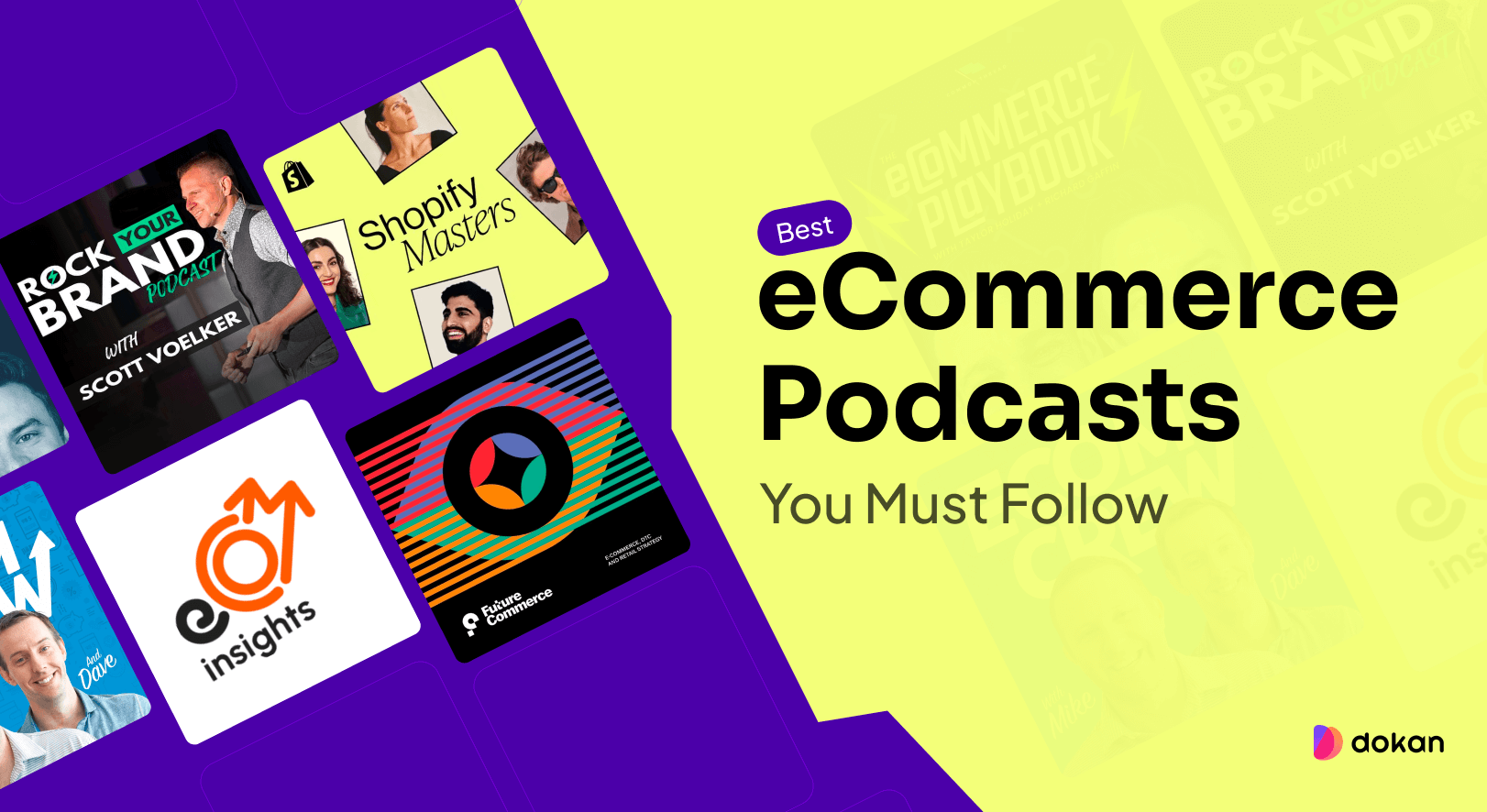


Leave a Reply